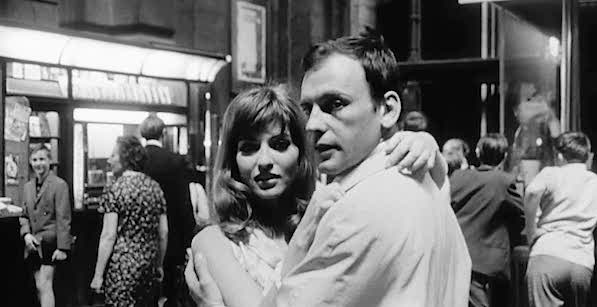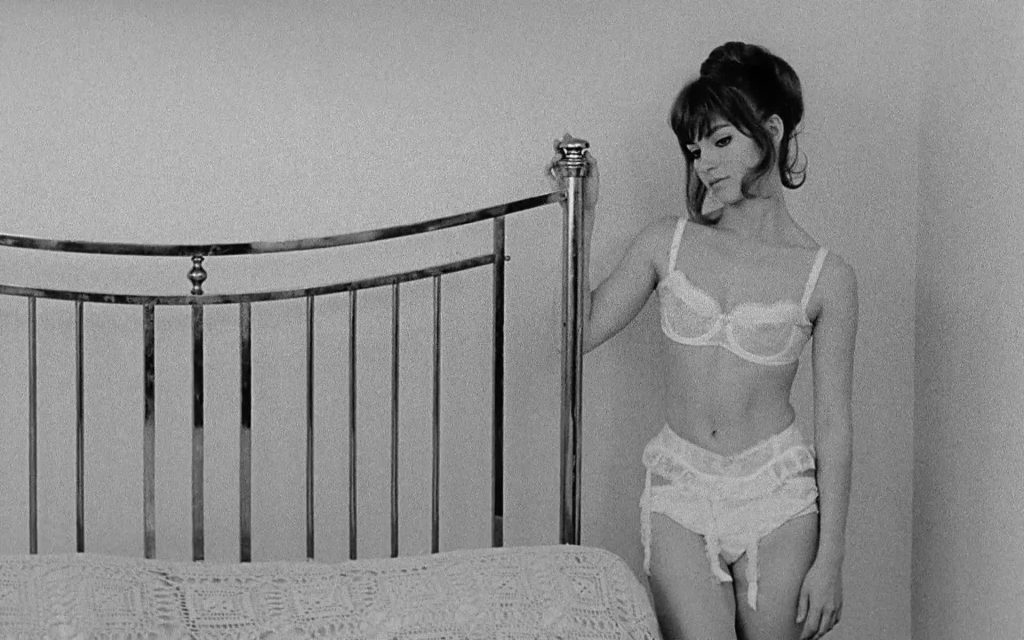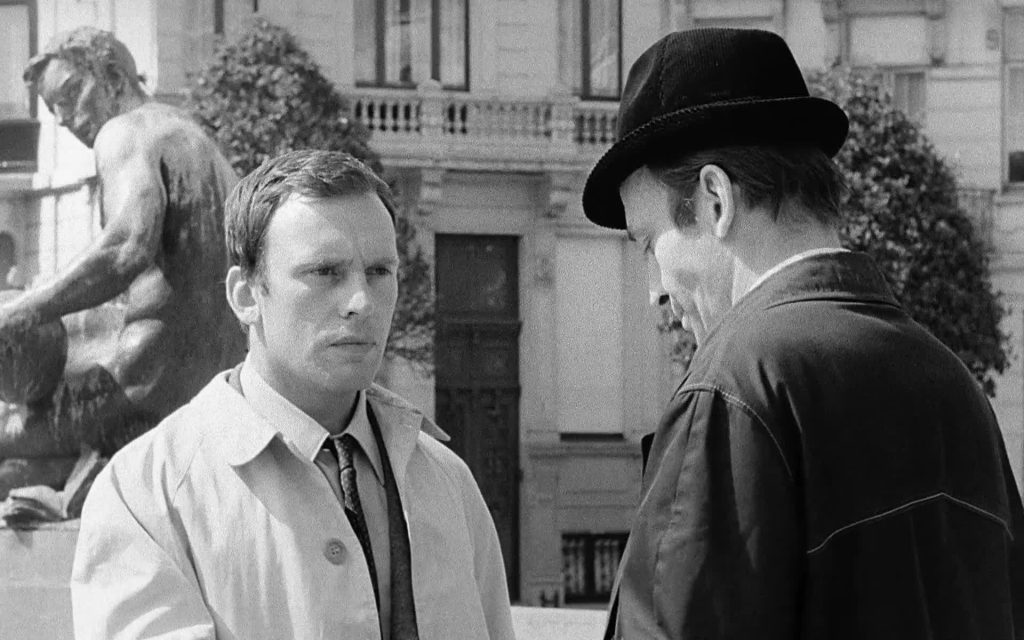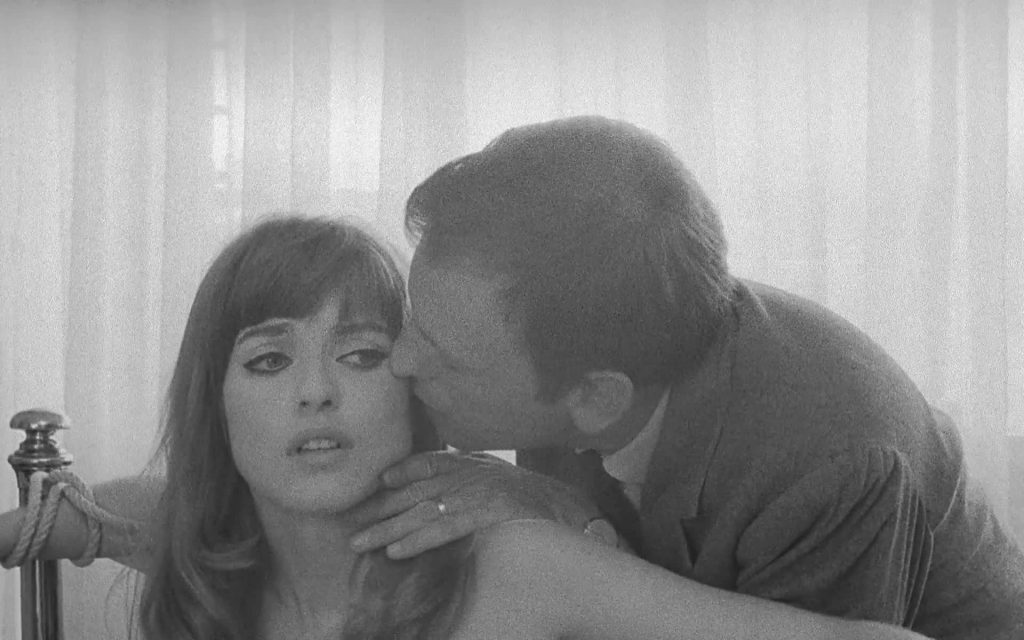When Last Year at Marienbad exploded on the international film scene in 1961 it seemed as if Alain Robbe-Grillet was on the cusp of a creating a nouveau cinema to go along with the nouveau roman he’d invented in such literary works as Jealousy and In the Labyrinth. But the chic romantic mystery of Marienbad (whose plot and atmosphere suggest what The Cabinet of Dr. Caligari might have been like had Josef von Sternberg created it), was directed by Alain Resnais—a filmmaker who had already proved his mastery of the medium with Hiroshima Mon Amour (1959)—a realistic-yet-poetic romantic drama crafted from a scenario and dialogue by Marguerite Duras. Marienbad was something far more playful. And when Robbe-Grillet went off on his own to himself direct scenarios he’d confected, things became more playful still. This is particularly the case with Trans-Europ-Express.
Released in 1967 Trans-Europ-Express was Robbe-Grillet’s second writer-director effort, and quite different from his first, L’immortelle (1963). That romantic puzzle film, starring Françoise Brion as a belle dame sans merci and Jacques Doniol-Valcroze as her bemused admirer was very much in the Marienbad mode—though far less populated (a cast of only three or four) and dramatically quite static. Set in a Pierre Louÿs inspired East it as clearly an “art film.” A more sober one than Marienbad in fact. But Robbe-Grillet’s propensity for displaying Brion nearly naked and in chains suggested what was to come in all of his later film work. For in Trans-Europ-Express Marie France Pisier is similarly unclothed and enchained. The difference is one of tone. Trans-Europ-Express is a kind of comedy in which Robbe-Grillet “sends up” none other than himself.
The new Robbe-Grillet mood is set from the start by master cinematographer Willy Kurant (who by this time had Masculin Féminin and Anna to his credit) whose camera moves about the train station where the film begins with suave casualness. We see Robbe-Grillet purchase a newsmagazine and a softcore “bondage” publication (decorously hiding the latter inside the former). He then meets up with his wife and his producer Marc (Paul Louyet) in a compartment on the train where they immediately start to discuss possible scenarios. He proposes an anti-hero named Elias who will take the Trans-Europe Express to Antwerp carrying a suitcase with drugs concealed in a false bottom. A grotesquely comic version of this is being enacted all the while, with actors wearing ridiculous fake beards and carrying the sort of “bombs” with them usually found in Bugs Bunny cartoons.
Suddenly Jean-Louis Trintignant appears—acting suspicious and not acknowledging Robbe-Grillet and his party at all. Taking no notice of this oddity Robbe-Girllet continues to discuss the project with Trintignant now “cast” in the role of Elias. A girl on the train (Arianne Sapriel) is shown rifling through Trintignant’s suitcase. But Robbe-Grillet dismisses this as a plot trope going nowhere and abandons it. This is the pattern that will continue throughout Trans-Europ-Express. When for instance Marie-France Pisier finally appears in the fully-realized flesh she may be a common prostitute, or a secret agent of some kind disguised as a prostitute. Or maybe just the actress that she is. To Robbe-Grillet it doesn’t matter in the slightest. Plot is just something to play with. Nothing need be taken seriously or “believed’—just toyed with for fun.
Admittedly much of this “fun” is quite dark. Pisier may seem to enjoy her chains. But one can’t imagine she feels the same about Trintignant strangling her. Likewise he gets killed as well—not a fate delivered the better to “prove a point” of any kind. It’s just “plot.” And so, one wonders, where is this all going? Why to a “happy ending” of course, where the train having return to Paris discovers Jean-Louis Trintignant and Marie-France Pisier geeeting one another like lovers. But they are not lovers—they’re actors. And nothing we’ve seen in the film is in way “real”—even though the actors are. Alain Robbe-Grillet has been “sending us up” in the style referred to in slang parlance as “vont en bateau.” All there is for us to do is enjoy the ride.








